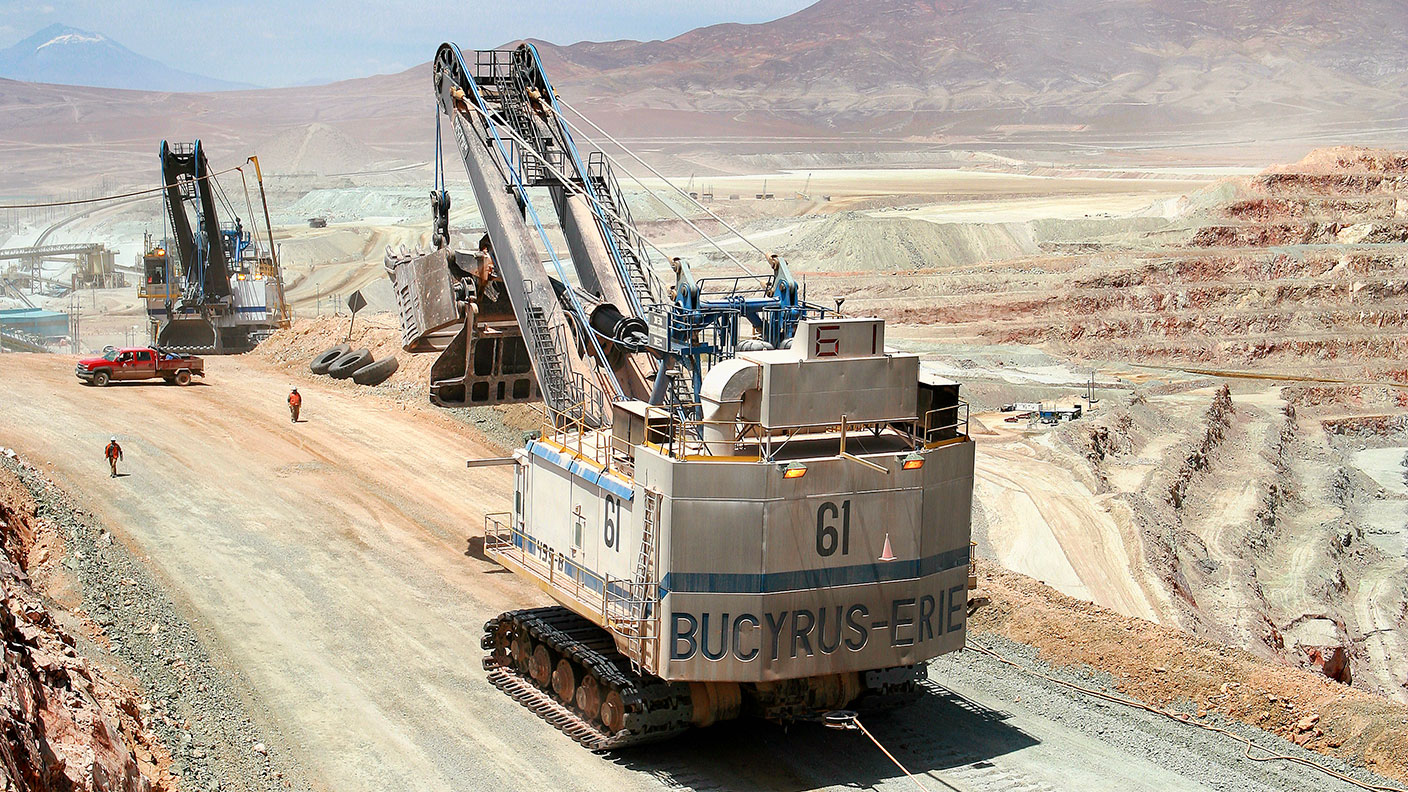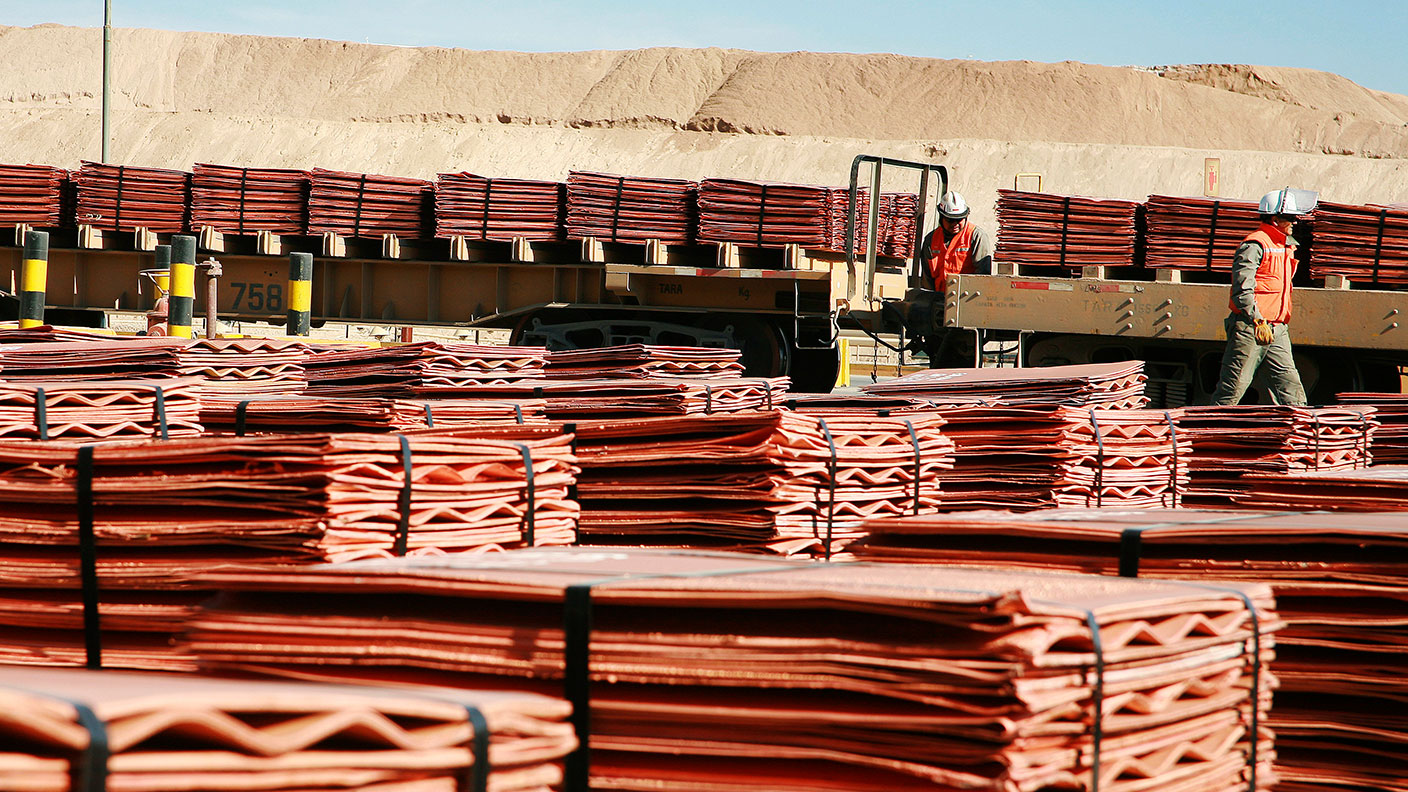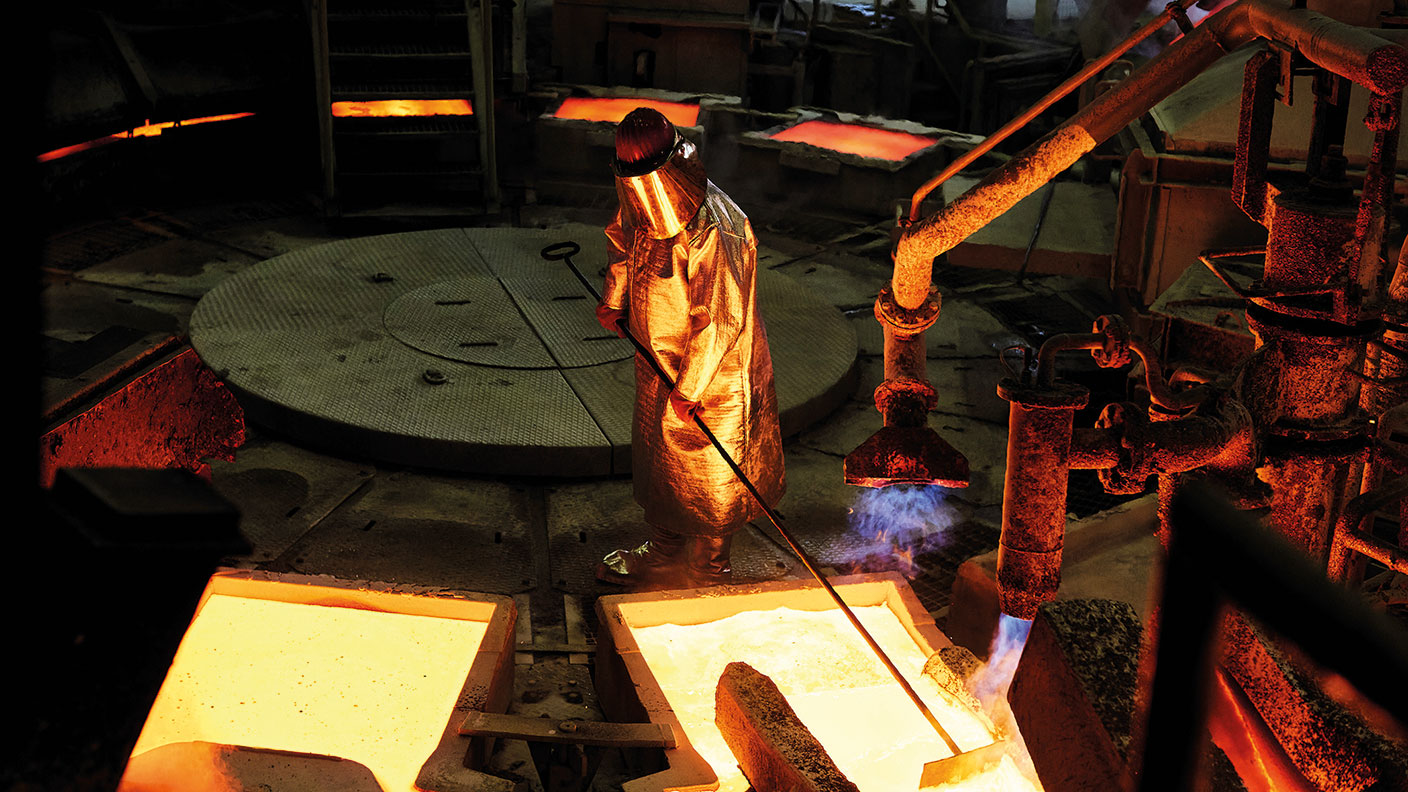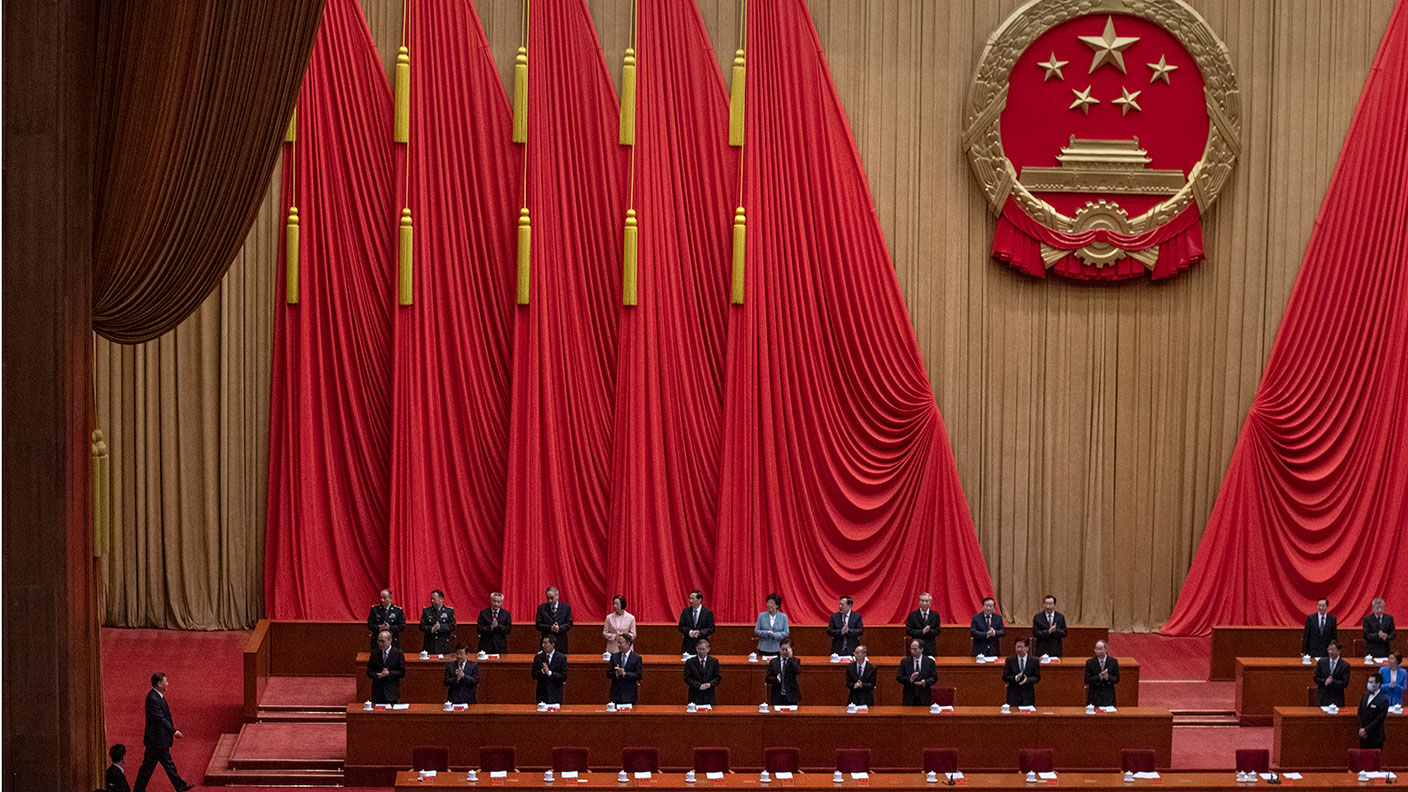It’s time to get back into mining stocks
Mining stocks took a battering in 2013, but things are looking up this year. Ed Bowsher reveals the best ways to profit.


2013 was a rotten year for the mining industry.
The gold price fell by 30%. Many other metals took a battering too.
Several major mining companies wrote down the value of their assets.
MoneyWeek
Subscribe to MoneyWeek today and get your first six magazine issues absolutely FREE

Sign up to Money Morning
Don't miss the latest investment and personal finances news, market analysis, plus money-saving tips with our free twice-daily newsletter
Don't miss the latest investment and personal finances news, market analysis, plus money-saving tips with our free twice-daily newsletter
There were even signs that the oft-discussed commodity supercycle' was coming to an end.
But 2014 has been a very different story so far. Things seem to be picking up for the miners. So much so that one of the City's top fund managers is buying mining shares for the first time in ten years.
This manager is buying mining stocks for the first time in a decade
According to Citywire, at a recent investment conference, he said: "Expectations for miners are pretty low and most analysts are forecasting a 20% decline in earnings.Against this backdrop, cash flow and yield looks attractive and there are a lot of new chief executives in place."
In other words, many folk are still writing off miners, but that's why you can get them at attractive valuations.
The point about new bosses is also important. Several mining bosses got the boot last year, because they got carried away by soaring commodity prices during the boom years. As a result, several mining companies spent too much on new mining projects, which could only ever be economic if commodity prices stayed at historically high levels.
Things have changed now that new CEOs have come in. These guys are focused on cutting costs and sweating existing assets as much as possible. Investment in new projects has been slashed. This focus on cutting costs should enable the mining majors to maintain their dividends and hopefully increase them. And as an income manager, that's exactly what Frost is looking for.
Miners have plenty of problems but they're in the price
As soon as the US Federal Reserve began to talk about the taper last May, we saw investors start to move away from riskier assets. After all, as the Fed tapers its money-printing, there is less money sloshing around to pay for speculative mining shares and also to drive up the price of commodities.
Then there's China.
There's been massive investment in infrastructure in China since the millennium, and that's meant huge demand for many commodities, especially iron ore. China's rapid growth and industrialisation were behind the commodity supercycle' the theory that commodity prices would rise dramatically over a 20-year period.
However, while I'm in little doubt that infrastructure spending in China will slow for the rest of this decade, I think you can overplay the fall in demand. Sure, fewer bridges will be built, but we're still going to see plenty of Chinese peasants moving into cities and leading a middle-class lifestyle for the first time. That means plenty of demand for washing machines, computers and, most importantly, cars.
Commodities are used in all of these consumer products they're not just for building bridges. So we may, for example, see increased demand for platinum and palladium which are both used in catalytic converters for engines. (You can read more about palladium in my colleague Dominic Frisby's recent Money Morning on the topic.
On top of that, economies are picking up across the developed world. As Jonathan Eley says in the FT: "New homes in the US consume copper just as new homes in China do."
The best ways to invest in the mining rebound
Glencore Xstrata (LSE: GLEN)
Rio Tinto (LSE: RIO)
Rio is in Frost's top ten holdings and trades on a price/earnings ratio of ten, while paying a dividend of 3.39%. Like many of its peers, Rio had a pretty weak balance sheet until recently, but debts have now been reduced.
My only real worry about Rio is that it's very exposed to just one commodity. Around 80% of its profits are generated by iron ore.
Glencore, by contrast, has a more diversified business. The valuation doesn't look so cheap at first glance. It's on a price/earnings ratio of 15 with a 2.8% yield. The big attraction is that Glencore has a substantial trading business which should allow it to pick up trends ahead of its competitors.
What's more, its copper business appears to be flying. Glencore recently announced a 26% rise in copper production, well ahead of analyst expectations.
If you'd like to invest in mining, but don't want to invest in a single company, you might prefer to invest in a specialist mining fund. My colleague David C Stevenson picked out his three favourite mining funds in MoneyWeek magazine in January.
If you subscribe to MoneyWeek magazine, you'll get three editions of the magazine for free plus access to the whole MoneyWeek archive, including David's article on the mining industry.
Oh, and John's just told me that we've got a group of mining experts coming into the office tonight to give us their views and top tips you can read all about that in next Friday's issue of MoneyWeek.
Our recommended articles for today
How the Fed conquered the markets
If you think Hargreaves Lansdown is too expensive, threaten to leave
Get the latest financial news, insights and expert analysis from our award-winning MoneyWeek team, to help you understand what really matters when it comes to your finances.
Ed has been a private investor since the mid-90s and has worked as a financial journalist since 2000. He's been employed by several investment websites including Citywire, breakingviews and The Motley Fool, where he was UK editor.
Ed mainly invests in technology shares, pharmaceuticals and smaller companies. He's also a big fan of investment trusts.
Away from work, Ed is a keen theatre goer and loves all things Canadian.
Follow Ed on Twitter
-
 Why pension transfers are so tricky
Why pension transfers are so trickyInvestors could lose out when they do a pension transfer, as the process is fraught with risk and requires advice, says David Prosser
-
 The political economy of Clarkson’s Farm
The political economy of Clarkson’s FarmOpinion Clarkson’s Farm is an amusing TV show that proves to be an insightful portrayal of political and economic life, says Stuart Watkins
-
 These 2 stocks are set to soar
These 2 stocks are set to soarTips The returns from these two aluminium and tin stocks could be spectacular when the commodity cycle turns says David J Stevenson.
-
 The best ways to buy strategic metals
The best ways to buy strategic metalsTips Weaker prices for strategic metals in the alternative-energy sector are an investment opportunity, says David Stevenson. Here, he picks some of the best ways to buy in.
-
 A lesson for investors from a ill-fated silver mine
A lesson for investors from a ill-fated silver mineAnalysis Mining methods may have changed since the industry’s early days, but the business hasn’t – digging ore from the ground and selling it at a profit. The trouble is, says Dominic Frisby, the scams haven't changed either.
-
 The natural resources industry is in a tight spot – which is bad news for the rest of us
The natural resources industry is in a tight spot – which is bad news for the rest of usOpinion The natural resources industry is in a bind. We need it to produce more energy and metals, but it has been starved of investment, plagued by supply chain issues, and hobbled by red tape. That’s bad news for everyone, says Dominic Frisby.
-
 How to invest in the copper boom
How to invest in the copper boomTips The price of copper has slipped recently. But that’s temporary – the long-term outlook is very bullish, says Dominic Frisby. Here, he explains the best ways to invest in copper.
-
 Why investors should consider adding Glencore to their portfolios
Why investors should consider adding Glencore to their portfoliosTips Commodities giant Glencore is well placed to capitalise on rising commodity prices and supply chain disruption, says Rupert Hargreaves. Here’s why you should consider buying Glencore shares.
-
 How to invest in the multi-decade boom in industrial metals
How to invest in the multi-decade boom in industrial metalsTips The price of key industrial metals has already begun to rise. The renewable energy transition will take them higher, says David Stevenson. Here's how to profit.
-
 Avoid China’s stockmarket – here’s what to invest in instead
Avoid China’s stockmarket – here’s what to invest in insteadOpinion China’s stockmarket is not a good place for investors to be. But you can't just ignore the world's second-largest economy, says Dominic Frisby. Here, he picks an alternative China play.
